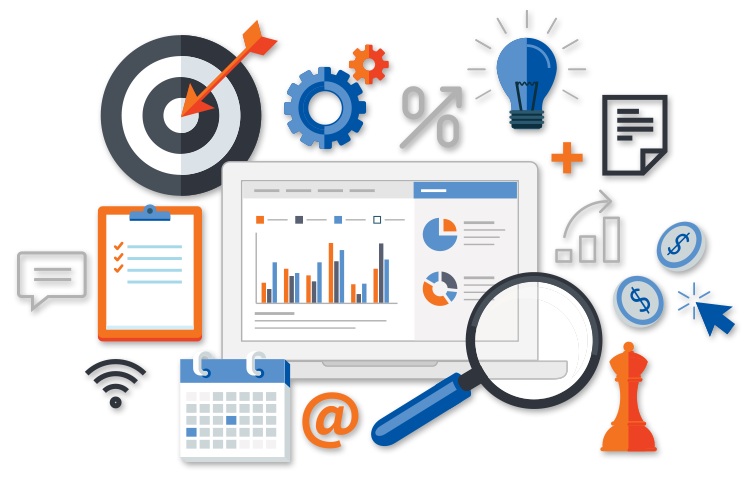Leverage Predictive Analytics for Future-Ready Decisions
Leverage Predictive Analytics for Future-Ready Decisions
Blog Article
Unlock Company Insights With Advanced Analytics Devices
In today's data-driven landscape, the ability to unlock service understandings via sophisticated analytics tools is coming to be significantly critical for organizations looking for an affordable edge. What are the crucial considerations that companies must address to successfully harness these advanced analytics abilities?
Significance of Advanced Analytics

Furthermore, the affordable landscape needs that companies not just respond to market adjustments yet also anticipate them. Advanced analytics empowers businesses to understand client choices, enhance operational efficiency, and alleviate dangers efficiently. By leveraging these devices, organizations can enhance their decision-making processes and drive development.
In addition, the assimilation of sophisticated analytics cultivates a culture of continuous enhancement, where companies can refine their strategies based on empirical evidence. As sectors such as money, health care, and retail significantly rely upon data to inform their operations, the importance of advanced analytics will only proceed to grow, making it a crucial element for continual success in today's data-driven economic climate.
Trick Functions of Analytics Equipment
Advanced analytics devices are identified by a range of important attributes that improve their effectiveness in information analysis and decision-making (Analytics). One of the key attributes is data integration capacity, which enables seamless aggregation of data from various sources, helping with comprehensive evaluation. This guarantees that services have an all natural sight of their data landscape
Moreover, advanced analytics tools often consist of robust statistical and anticipating modeling capabilities. These attributes allow companies to forecast trends and recognize patterns, causing more educated tactical decisions. Visualization devices are also indispensable, offering instinctive visual depictions of information, which streamline complicated details and make insights extra accessible to stakeholders.
An additional vital element is the incorporation of maker understanding formulas, which enhance the capability to examine big datasets and reveal surprise insights without specific programs. Furthermore, user-friendly user interfaces permit non-technical individuals to take advantage of these tools effectively, democratizing information gain access to across the company.
Types of Advanced Analytics
While various advanced analytics methodologies exist, they can usually be classified into numerous vital types that serve distinct purposes within organizations.
Descriptive analytics concentrates on summing up historical data to identify fads and patterns. It supplies understandings into what has happened in the past, making it possible for organizations to make informed choices based on empirical evidence.
Predictive analytics, on the other hand, uses analytical algorithms and artificial intelligence methods to forecast future results based upon historical information. This type is particularly helpful for threat assessment and need forecasting, allowing services more to prepare for possible difficulties and possibilities.
Prescriptive analytics goes a step better by recommending actions based upon predictive insights. Analytics. It utilizes optimization and simulation strategies to recommend the ideal program of activity, making sure that organizations can make data-driven choices with confidence
Application Techniques
Successful application methods for advanced analytics are essential for companies looking for to harness the complete more information potential of their information. To begin with, a clear roadmap must be developed that straightens analytics efforts with total organization objectives. This requires a deep understanding of organizational goals and the details questions analytics can answer.
Next, buying the right innovation and tools is important. Organizations ought to examine offered platforms for scalability, simplicity of use, and combination abilities with existing systems. This makes certain that information can be collected, refined, and evaluated successfully.
Additionally, fostering a data-driven culture is vital. Educating staff members on analytics devices and approaches encourages them to use understandings efficiently in decision-making. Engaging stakeholders across divisions can help with buy-in and encourage cooperation, improving the overall success of analytics tasks.
Additionally, companies must focus on information top quality and governance. Carrying out durable data administration practices guarantees that the understandings generated are precise and trusted. Finally, continuous analysis and version of analytics procedures enable companies to adapt to changing business requirements and technical improvements, inevitably driving sustained worth from their analytics campaigns.
Future Patterns in Analytics
As companies implement robust analytics approaches, it is important to continue to be knowledgeable about the developing landscape of analytics innovations and approaches. Future patterns in analytics are poised to change exactly how businesses acquire understandings, enhance operations, and drive decision-making.

One more fad is the increase of increased analytics, which automates data preparation and insight generation, minimizing the reliance on data experts. This democratization of analytics equips workers in all degrees to take advantage of information in their functions.
In addition, the shift in the direction of real-time analytics will enable organizations to react promptly to market adjustments and client preferences, enhancing dexterity and competitiveness. As data personal privacy regulations become much more rigid, analytics remedies will additionally require to prioritize ethical data use, making certain compliance while keeping robust understanding generation. Embracing these fads will be critical for organizations looking for to preserve an one-upmanship in a progressively data-driven globe.
Final Thought
In verdict, advanced analytics tools play an essential duty check in changing information right into workable insights, driving strategic development and operational performance across organizations. Effective application techniques make sure that these devices are incorporated right into organizational processes, while emerging fads suggest a continued evolution in analytics capabilities.
Advanced analytics incorporates a collection of techniques, consisting of anticipating modeling, machine learning, and information mining, which allow services to discover patterns, projection fads, and maximize operations.
Successful implementation strategies for sophisticated analytics are crucial for companies seeking to harness the complete capacity of their data. Constant examination and version of analytics processes enable organizations to adjust to changing company requirements and technological developments, inevitably driving sustained worth from their analytics efforts.
As data personal privacy policies end up being extra strict, analytics options will certainly additionally need to focus on ethical information usage, ensuring compliance while preserving durable insight generation.In conclusion, progressed analytics tools play a vital function in changing data into actionable insights, driving calculated development and functional efficiency across organizations.
Report this page